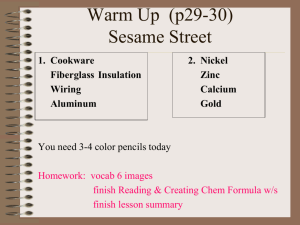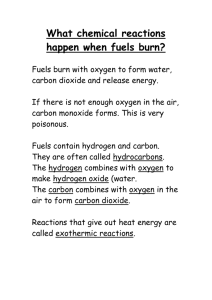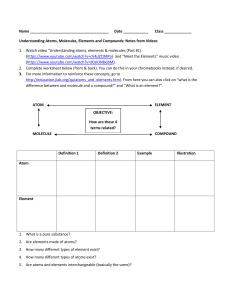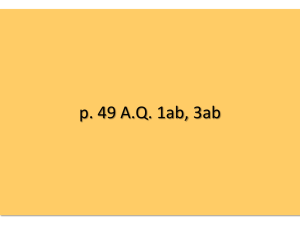Atoms, Elements, Compounds & Mixtures Worksheet
advertisement
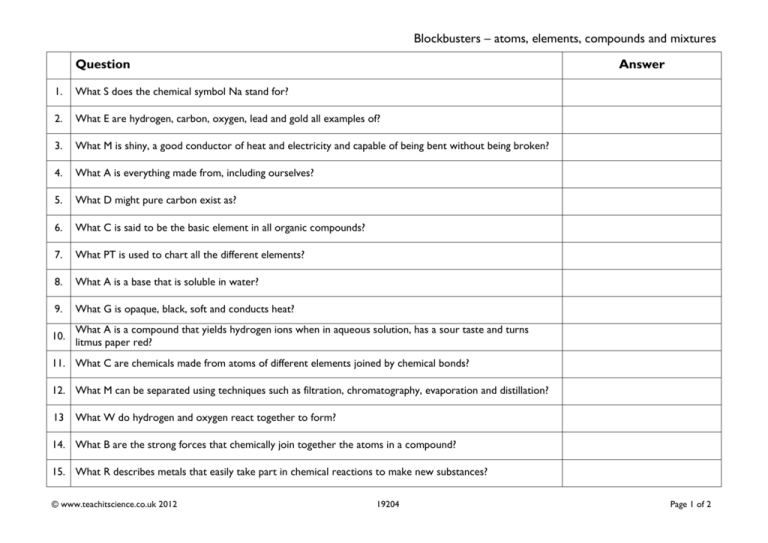
Blockbusters – atoms, elements, compounds and mixtures Question Answer 1. What S does the chemical symbol Na stand for? 2. What E are hydrogen, carbon, oxygen, lead and gold all examples of? 3. What M is shiny, a good conductor of heat and electricity and capable of being bent without being broken? 4. What A is everything made from, including ourselves? 5. What D might pure carbon exist as? 6. What C is said to be the basic element in all organic compounds? 7. What PT is used to chart all the different elements? 8. What A is a base that is soluble in water? 9. What G is opaque, black, soft and conducts heat? 10. What A is a compound that yields hydrogen ions when in aqueous solution, has a sour taste and turns litmus paper red? 11. What C are chemicals made from atoms of different elements joined by chemical bonds? 12. What M can be separated using techniques such as filtration, chromatography, evaporation and distillation? 13 What W do hydrogen and oxygen react together to form? 14. What B are the strong forces that chemically join together the atoms in a compound? 15. What R describes metals that easily take part in chemical reactions to make new substances? © www.teachitscience.co.uk 2012 19204 Page 1 of 2 Blockbusters – atoms, elements, compounds and mixtures Question Answer 1. What S does the chemical symbol Na stand for? sodium 2. What E are hydrogen, carbon, oxygen, lead and gold all examples of? 3. What M is shiny, a good conductor of heat and electricity and capable of being bent without being broken? metal 4. What A is everything made from, including ourselves? atoms 5. What D might pure carbon exist as? 6. What C is said to be the basic element in all organic compounds? 7. What PT is used to chart all the different elements? 8. What A is a base that is soluble in water? 9. What G is opaque, black, soft and conducts heat? graphite 10. What A is a compound that yields hydrogen ions when in aqueous solution, has a sour taste and turns litmus paper red? an acid diamonds carbon periodic table alkali 11. What C are chemicals made from atoms of different elements joined by chemical bonds? 12. What M can be separated using techniques such as filtration, chromatography, evaporation and distillation? 13 What W do hydrogen and oxygen react together to form? compounds mixture water 14. What B are the strong forces that chemically join together the atoms in a compound? 15. What R describes metals that easily take part in chemical reactions to make new substances? © www.teachitscience.co.uk 2012 elements 19204 bonds reactive Page 2 of 2


